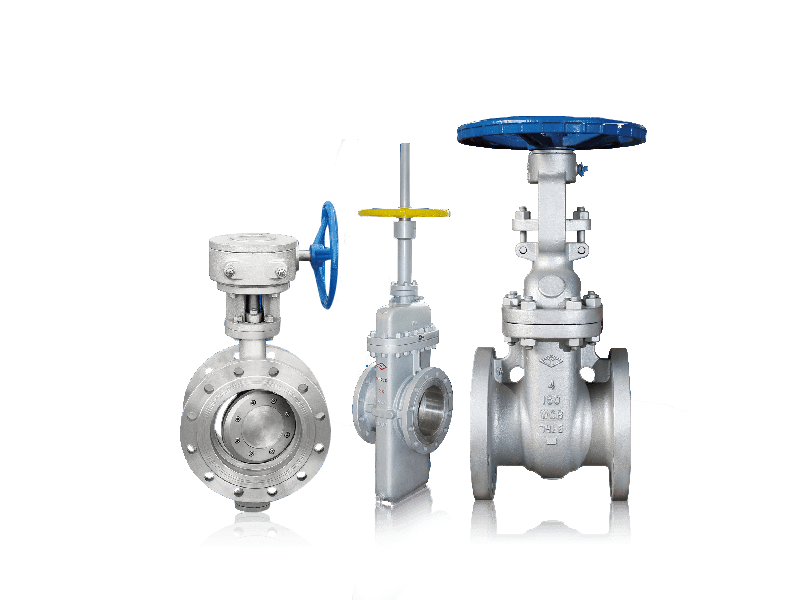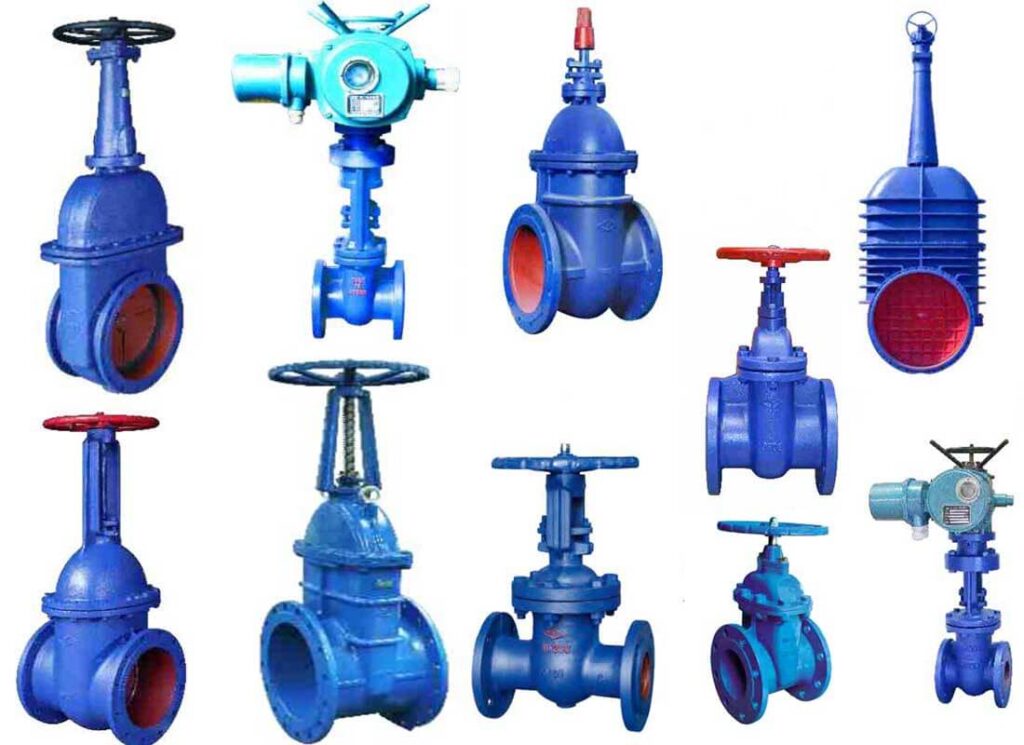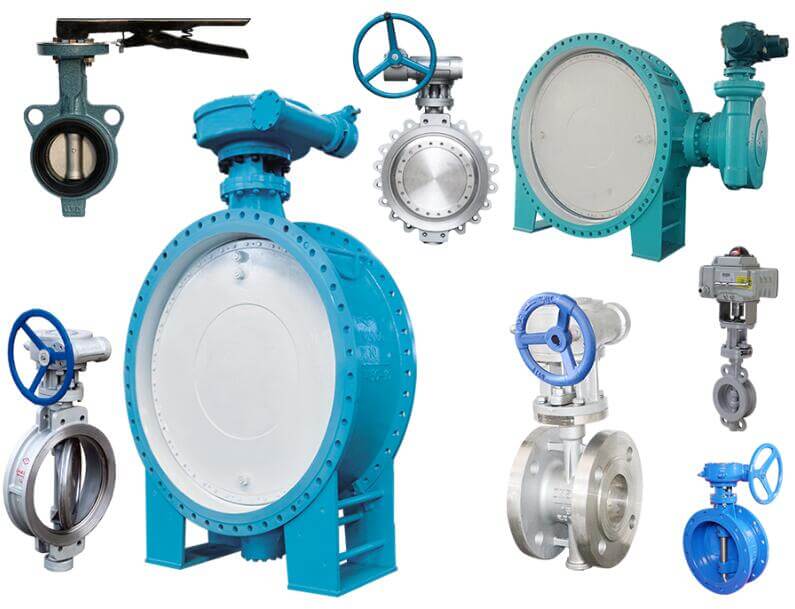دو طرح سوپاپ که اغلب مورد توجه قرار می گیرند عبارتند از دریچه دروازه در مقابل شیر پروانه ای. در حالی که هر دو هدف تنظیم جریان هستند, آنها به طور قابل توجهی در ساخت خود متفاوت هستند, عملیات, و ویژگی های عملکرد. به عنوان یک متخصص باتجربه شیرآلات, اغلب از من خواسته می شود تا راهنمایی در مورد انتخاب مناسب ترین نوع شیر برای کاربردهای مختلف صنعتی ارائه دهم. انتخاب بین این دو نوع شیر مستلزم درک کامل نقاط قوت و محدودیت های مربوطه است.

دریچه های دروازه: اسب های کار قوی و قابل اعتماد

شیرهای دروازه ای مدت هاست که به عنوان اسب های کار قوی و قابل اعتماد در صنعت شیرآلات شناخته شده اند. طراحی آنها دارای یک دروازه گوه ای شکل است که عمود بر مسیر جریان حرکت می کند, امکان باز شدن تمام سوراخ در حالت باز را فراهم می کند. این ویژگی مقاومت در برابر جریان را به حداقل می رساند, دریچههای دروازه را به انتخابی عالی برای کاربردهایی که افت فشار یک نگرانی حیاتی است تبدیل میکند, مانند سیستم های توزیع آب, خطوط لوله نفت و گاز, و تاسیسات تولید برق.
یکی از مزیت های کلیدی دریچه های دروازه ای توانایی آنها در ایجاد آب بندی محکم در حالت بسته است., اطمینان از قابلیت خاموش کردن موثر. آنها همچنین به دلیل قابلیت جریان دو طرفه خود شناخته شده اند, که به آنها اجازه می دهد تا جریان را در هر جهت کنترل کنند, آنها را برای کاربردهایی که ممکن است معکوس جریان رخ دهد، همه کاره می کند.
با این حال, دریچه های دروازه ای محدودیت هایی دارند. آنها معمولاً به گشتاور عملیاتی بالاتری در مقایسه با سایر انواع شیر نیاز دارند, که می تواند آنها را برای برنامه هایی که نیاز به عملیات مکرر دارند، کمتر مناسب کند. علاوه بر این, شیرهای دروازه ای برای خدمات دریچه گاز توصیه نمی شوند, زیرا وضعیت نیمه باز می تواند به مرور زمان باعث فرسایش و آسیب به اجزای شیر شود.
شیرهای پروانه ای: راه حل های فشرده و مقرون به صرفه

شیرهای پروانه ای, از سوی دیگر, ترکیبی منحصر به فرد از طراحی فشرده و مقرون به صرفه بودن را ارائه می دهد. این دریچه ها دارای یک دیسک دایره ای هستند که روی یک ساقه می چرخد, به دیسک اجازه می دهد تا با مسیر جریان در موقعیت باز و عمود بر جریان در موقعیت بسته تراز شود..
یکی از مزیت های کلیدی شیرهای پروانه ای ساختار سبک و فشرده آنهاست, که نصب و نگهداری آنها را آسان تر می کند, به ویژه در کاربردهای محدود فضا. آنها همچنین در مقایسه با انواع دیگر شیرها نسبتاً ارزان هستند, آنها را به گزینه ای جذاب برای پروژه های بودجه ای تبدیل می کند.
شیرهای پروانه ای برای کاربردهایی که نیاز به عملیات مکرر یا خدمات دریچه گاز دارند، مناسب هستند, زیرا طراحی آنها امکان عملکرد صاف و کارآمد با حداقل گشتاور مورد نیاز را فراهم می کند. با این حال, آنها از نظر قابلیت های فشار و دما دارای محدودیت هایی هستند, و همچنین توانایی آنها در ارائه یک خاموشی محکم, به خصوص در اندازه های بزرگتر یا هنگام کار با انواع خاصی از رسانه ها.
ارزیابی انتخاب بهینه
هنگام انتخاب بین شیرهای دروازه و شیر پروانه ای, در نظر گرفتن الزامات خاص برنامه بسیار مهم است, از جمله عواملی مانند شرایط فشار و دما, ویژگی های جریان, پتانسیل فرسایش یا خوردگی, و نیاز به خاموش کردن شدید یا کنترل جریان دو طرفه.
در کاربردهایی که فشار زیاد است, دمای شدید, یا کنترل جریان دو طرفه مورد نیاز است, شیرهای دروازه ای به دلیل ساختار قوی و عملکرد قابل اعتماد آنها اغلب انتخاب ارجح هستند. آنها معمولا در صنایعی مانند نفت و گاز استفاده می شوند, تولید برق, و سیستم های توزیع آب.
شیرهای پروانه ای, از سوی دیگر, برای برنامه هایی که مقرون به صرفه بودن را در اولویت قرار می دهند مناسب هستند, عملیات مکرر, یا قابلیت های دریچه گاز. آنها معمولاً در صنایعی مانند فرآوری شیمیایی یافت می شوند, خمیر و کاغذ, و سیستم های HVAC, جایی که طراحی فشرده و عملکرد کارآمد آنها ارزش دارد.
سازندگان معتبر شیرآلات دوست دارند تولید کننده شیر صنعتی Farpro Yuanda طیف گسترده ای از شیرهای دروازه ای و شیرهای پروانه ای را ارائه می دهد, طراحی و تولید شده تا بالاترین استانداردهای صنعت و انتظارات مشتری را برآورده کند. به عنوان کارشناس سوپاپ, من توصیه می کنم به طور کامل نیازهای کاربردی خاص را ارزیابی کنید و با متخصصان با تجربه مشورت کنید تا از انتخاب بهینه شیر برای هر پروژه اطمینان حاصل کنید..
